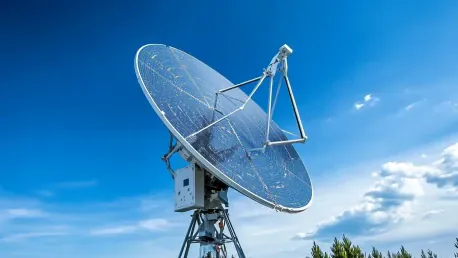The partnership between T-Mobile and SpaceX’s Starlink is not just a paradigm shift; it’s a groundbreaking development in the realm of mobile connectivity, particularly benefiting the rural and remote areas frequently neglected by conventional broadband and fiber optic networks. Combining T-Mobile’s mobile network expertise with Starlink’s low-Earth orbit satellite technology, this collaboration seeks to offer high-speed internet that is accessible, affordable, and transformative for those who need it most. By deploying satellites that function as cell towers in space, the two companies aim to provide an unprecedented coverage solution that substantially mitigates the limitations faced by users in rural America.
Introduction to Starlink
Starlink, a subsidiary of SpaceX, embarked on its journey toward revolutionizing internet connectivity by launching its first batch of small internet satellites in 2019. These satellites orbit the Earth at low altitudes, providing global coverage with significantly reduced latency compared to traditional, geostationary satellites. Initially, Starlink was focused on delivering internet services through a compatible ground antenna; however, owing to its growing network of thousands of satellites, it has expanded its scope to include mobile networks, now collaborating with industry giant T-Mobile.
Operating thousands of these satellites, Starlink brings internet services to locations that typical broadband or fiber optic networks cannot reach. SpaceX’s innovative approach features direct-to-cell capabilities integrated within their satellites, turning them into cell towers in space. This development makes it possible for efficient data transmission and connectivity, solving significant challenges in rural and isolated areas where traditional infrastructures are either non-existent or insufficient. By extending its high-speed internet service beyond the ground antenna to incorporate mobile devices, Starlink is poised to redefine the future of rural connectivity.
T-Mobile and Starlink Collaboration
In an ambitious move, T-Mobile recently launched a beta trial of its Starlink-powered mobile network in advance of a comprehensive rollout planned for July. This network, a product of the collaboration between T-Mobile and SpaceX, introduces what can be considered “the first and only space-based mobile network” within the United States. Its primary goal is to deliver reliable cell phone service to remote and rural areas that have previously faced connectivity challenges.
This service is designed to be inclusive, not restricted to T-Mobile customers alone. Users from other major carriers like AT&T and Verizon, as long as they possess compatible smartphones supporting eSIM, can also take advantage of this innovative network. After the beta phase, T-Mobile plans to offer this service for free to users subscribed to its Go5G Next plan, while others have the option to subscribe for $15 per month. In contrast, non-T-Mobile users will be able to access the service for $20 per month, establishing a cost-efficient solution to extended mobile coverage.
The collaborative effort between T-Mobile and Starlink introduces a new standard in mobile networks by leveraging Starlink’s advanced satellite technology. The beta testing phase, which began in February, has already provided users across all U.S. carriers an opportunity to experience the service. Following this trial period, users will transition to a subscription-based model by July, with T-Mobile customers benefiting from attractive early adoption discounts. This multi-carrier approach promises a wide-reaching impact, fundamental in bridging connectivity gaps, particularly in underserved regions.
How T-Mobile’s Starlink Mobile Service Works
The T-Mobile Starlink service operates by utilizing a network of 451 satellites that are equipped with direct-to-cell capabilities. These innovative satellites essentially act as cell towers in space. Consequently, any smartphone that is compatible and within the line of sight of the sky can connect to the network without requiring any additional hardware. This ingenious solution directly addresses existing gaps in standard cell coverage, ensuring continuous and efficient connectivity in remote and rural areas.
Beta testing of this novel service began in February, offering users from all major US carriers, including Verizon and AT&T, an opportunity to test the fledgling technology. Starting in July, the service will transition into a paid model, with T-Mobile customers enjoying early adoption discounts. In contrast, users from other carriers can subscribe for a monthly fee of $20. This subscription model offers a cost-effective and accessible option for comprehensive mobile connectivity, optimizing coverage for regions previously marred by limited cell service.
The practical implementation of this service relies on satellite technology that remains unobtrusive for users, requiring no additional hardware beyond their compatible smartphones. As such, mobile Internet connectivity becomes seamlessly accessible, as these satellites bridge cellular service gaps that have long plagued isolated and underserved regions. This ability to deliver high-speed internet through conventional mobile devices exemplifies the innovation driving this collaboration, promising a new chapter of connectivity for users across the US.
Supported Devices and Software
Users seeking access to T-Mobile Starlink will find that it is compatible with most modern smartphones, including Apple’s iPhone 14 models and later. To connect to the network, users must ensure their devices are running on iOS 18.3 or later versions. This compatibility requirement ensures that users experience optimal performance when using the Starlink mobile service.
Public beta access is also open to a range of smartphone brands and models, including recent devices from Google, Motorola, and Samsung, extending back over the past four years. Crucially, these phones need to be “satellite optimized” to deliver the best performance. Officially, the supported devices list includes the Apple iPhone 14 and later models, Google Pixel 9, Motorola 2024 and later versions, Samsung Galaxy S21 and newer models, and the REVVL 7.
The extensive list of compatible smartphones broadens the scope for potential users, allowing a wide audience to benefit from this groundbreaking service. Ensuring that devices are updated and optimized for satellite connectivity is a critical aspect of accessing T-Mobile Starlink, emphasizing the importance of keeping technology current to harness the full potential of this innovative network.
Introduction to Starlink Mini
Starlink Mini offers a compelling alternative for accessing the Internet via Starlink’s satellite network. Through the Starlink Mini kit, users can establish a portable Wi-Fi network that connects to the high-speed internet delivered by the satellite-embedded network. This flexibility allows multiple devices to benefit from peak download speeds exceeding 100 Mbps, making it a versatile option for users needing reliable internet access on the go.
Affordability and mobility are key attributes of the Starlink Mini kit, designed for easy and seamless setup. However, to tap into its full capabilities, users must acquire the Starlink Mini kit and subscribe to Roam packages. The Roam packages come in various plans, with the 50GB Roam costing $50 monthly and the Roam Unlimited plan priced at $165 monthly.
The compact and portable nature of the Starlink Mini kit gives it an edge, particularly for individuals who require mobile and flexible internet solutions. Compatible with many devices, the kit is ideal for users in need of robust connectivity, whether traveling or stationary in areas underserved by conventional internet options. The availability of different subscription packages allows users to customize their internet access according to their specific needs, making it a viable and cost-effective solution for widespread connectivity.
Starlink and Subaru
In the landscape of connected services, Subaru’s Starlink system offers an interesting comparison but operates on an entirely different premise. Unlike SpaceX’s Starlink, Subaru Starlink caters specifically to in-car connected services through standard cellular networks. This service enhances the driving experience by offering features such as enhanced roadside assistance, remote ignition controls, and additional telematics. However, it does not incorporate satellite technology, which limits its functionality to areas where standard cellular networks are available.
As a result, Subaru’s Starlink system may not provide connectivity in areas lacking cell tower coverage, highlighting a distinct difference from the ambitious satellite connectivity offered by SpaceX’s Starlink. While the in-car services add value and convenience for drivers, they do not bridge the connectivity gaps in the same way as the satellite-based mobile and internet services aimed at rural and remote regions.
Financial Aspects and Accessibility
The collaboration between T-Mobile and SpaceX’s Starlink represents a significant shift in mobile connectivity, especially for rural and remote areas often overlooked by traditional broadband and fiber optic networks. By bringing together T-Mobile’s expertise in mobile networks and Starlink’s low-Earth orbit satellite technology, this partnership aims to deliver high-speed internet that is not only accessible and affordable but also transformative for those who need it the most.
This innovative alliance seeks to resolve some of the major limitations encountered by rural American users. The strategy involves deploying satellites that act like cell towers in space, thus dramatically expanding coverage and connectivity. Such an approach ensures that even the most remote locations can enjoy reliable and fast internet access.
This groundbreaking development has the potential to bridge the digital divide by providing a new level of connectivity that surpasses what has traditionally been available in hard-to-reach areas. For communities in rural and underserved regions, this could mean enhanced educational opportunities, improved healthcare access through telemedicine, and better economic prospects through digital business ventures.
By combining the strengths of T-Mobile’s mobile network and the innovative satellite technology from SpaceX, this partnership is poised to redefine what is possible in terms of internet access and mobile connectivity, making a profound impact on the lives of many Americans.









